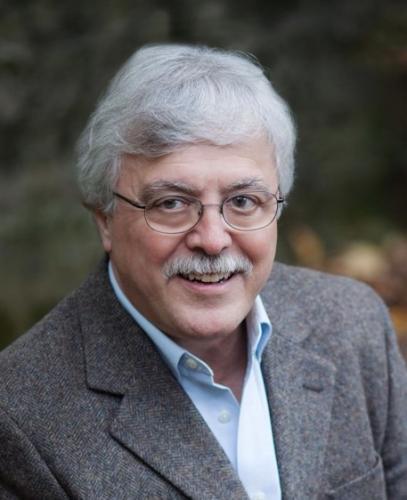
Professor Emeritus Terry Eiler weighs in on power of photojournalism in Cleveland.com guest column

The number of historic events that have happened recently that are associated with the upcoming presidential election is staggering, and Terry Eiler, a professor emeritus at Ohio University who co-founded the School of Visual Communication and is the school’s former director, argues the professional photography that comes along with those events have significant power. Eiler recently penned a guest column on the topic for Cleveland.com.
“The widely published, iconic photos of a bloodied, fist-pumping Donald Trump after the recent assassination attempt remind us of the enduring power of single images and the unique skills of professionals behind the cameras,” wrote Eiler in the column. “In this digital age when nearly everyone has a camera-phone, we might mistakenly discount the vital role of photojournalists, the front-line professionals who go where we can’t go and at times face danger in doing so.”
Eiler says the Trump assassination attempt at a campaign rally in Butler, Pa., in July is one of those moments in American history where people will remember where they were the moment they heard about it. And the iconic photographs will be the images of the event that they recall.
“The pictures of the assassination attempt are iconic because those are the pictures that we will keep in our memory. The power of still photography is the ability to freeze a moment in time and keep it as a symbol of that moment,” said Eiler. “Video tells us a story, but still imaging captures a memory and makes it indelible.”
One of the photographs shows a defiant, blood-spattered Trump surrounded by U.S. Secret Service agents pumping his fist in the air with an American flag billowing in the background, after a would-be assassin's bullet grazed his right ear. The photo was taken by the Associated Press’s Evan Vucci.
“Vucci’s picture captures everything that was happening in one fell swoop,” said Eiler. “For history’s sake, his image will be an iconic symbol. All of the symbolism, all of the moment, all of the interaction, his photo ties a narrative together.”
In the column, Eiler listed other historical photos that were similar in their iconic nature, which had a powerful, long-lasting impact on how those events were perceived at the time and how they were remembered.
“The history-making power of photography spans the spectrum of human experience, such as the joyous V-J Day embrace in Times Square, shot by Alfred Eisenstaedt in 1945; the defiant ‘Tank Man’ photograph in Tiananmen Square, taken by Jeff Widener in 1989; the weary migrant woman in California photographed by Dorothea Lange in 1936; and the terrified ‘ photographed in Vietnam by Nick Ut in 1972,” wrote Eiler. “In 1969, Eddie Adams of The Associated Press won the Pulitzer Prize for Breaking News Photography for documenting an execution in Saigon. Interestingly, Adams is from New Kensington, Pennsylvania, not far from the history-making Trump rally in Butler.”
In a time when many get their news and information from unreliable sources on social media, Eiler pointed out in the column that these kinds of images are an important reminder of the role professional photography can play.
“As we face the corrosive challenges of misinformation, let’s remember the unflinching informative power of photos and the talented photojournalists who help document our history.”
